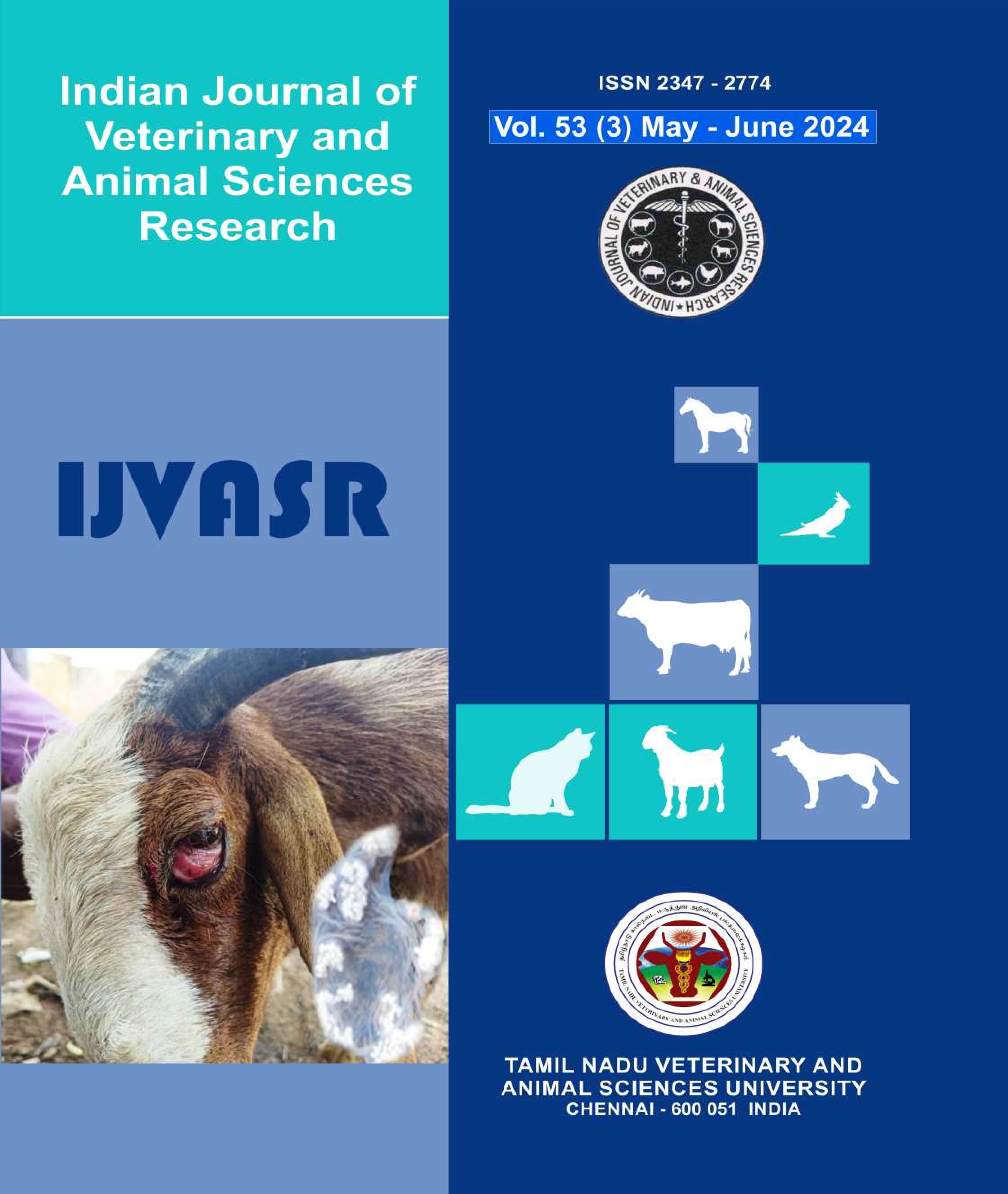HEPATOZOONOSIS IN DOBERMAN - EMERGENCY WHOLE BLOOD TRANSFUSION AND TREATMENT STRATEGIES
Keywords:
Hepatozooncanis, CKD, anaemia, Blood transfusionAbstract
A two and half year old intact 19 kg female Doberman was referred to small animal medicine outpatient unit of Madras Veterinary College Teaching Hospital with the history of lateral recumbency, dyspnoea, weight loss, inappetence, brownish diarrhoea for past 2 weeks. Clinical examination revealed fever, blanched mucous membrane, lymphadenopathy, dehydration > 5%. Hematology revealed severe anaemia, moderate thrombocytopenia and severe leukocytosis with neutrophilia. Ultrasonography evidenced chronic kidney disease (CKD) and peripheral blood smear cytology confirmed Hepatozoan canis gamonts in neutrophils. Emergency fresh whole blood transfusion was done and treatment initiated with a combination therapy including single dose of Imidocarb dipropionate @7.5 mg/kg and Doxycycline @ 10 mg PO for 28 days following which the dog showed progressive improvements.
Downloads
References
Baneth G. (2006). Hepatozoonosis, In: Greene CE (Ed) Infectious diseases of the dog and cat, 3rd edn. W. B. Saunders, Philadelphia, 698-705.
Baneth, G., Samish, M. and Shkap, V. (2007). Life cycle of Hepatozooncanis (Apicomplexa: Adeleorina: Hepatozoidae) in the tick Rhipicephalus sanguineus and domestic dog (Canis familiaris). Journal of Parasitology, 93(2): 283-299.
Baranidharan, G. R., Prathaban, S., Nambi, A. P., Dhanan, J., Lubas, G. and Medina Valentin, A. A. (2018). Prevalence of dog erythrocyte antigen (DEA) 1 amongst the dog blood donors at Tamil Nadu veterinary and animal sciences university animal blood bank (TABB), India. Hematology and Transfusion International Journal, 6(2): 47- 49.
Craig, T. M. (1998). Hepatozoonosis, In C. E. Greene (ed.), Infectious diseases of the dog and cat, 2nd ed. The W. B. Saunders Co., Philadelphia, p 458-465.
Gondim, L. F., Kohayagawa, A., Alencar, N. X., Biondo, A.W., Takahira, R.K. and Franco, S.R. (1998). Canine hepatozoonosis in Brazil: description of eight naturally occurring cases. Veterinary Parasitology, 74(2-4): 319 - 323.
Macintire, D.K., Vincent-Johnson, N.A., Kane, C.W., Lindsay, D.S., Blagburn, B.L. and Dillon, A.R. (2001). Treatment of dogs infected with Hepatozoon americanum: 53 cases (1989–1998). Journal of the American Veterinary Medical Association, 218(1): 77 - 82.
Merck Veterinary manual 10th edition (2011).https://doi.org/10.2460/ajvr.72.4.430, Volume 72: Issue 4
Otranto, D., Dantas-Torres, F., Weigl, S., Latrofa, M.S., Stanneck, D., Decaprariis, D. and Baneth, G. (2011). Diagnosis of Hepatozooncanis in young dogs by cytology and PCR. Parasites and Vectors, 4(1): 1– 6.
Downloads
Submitted
Published
Issue
Section
License
All the copy right belongs to the sponsoring Organization, Tamil Nadu Veterinary and Animal Sciences University, Chennai - 51.

